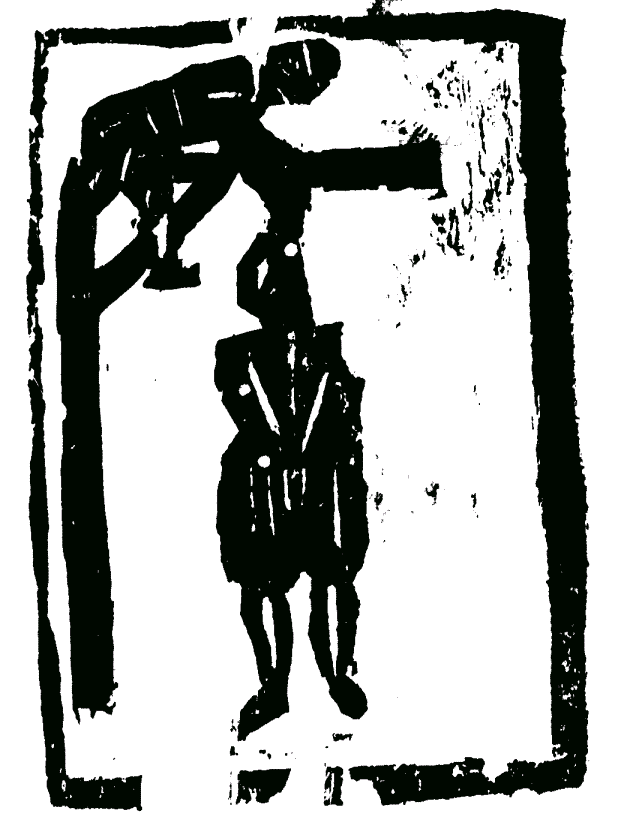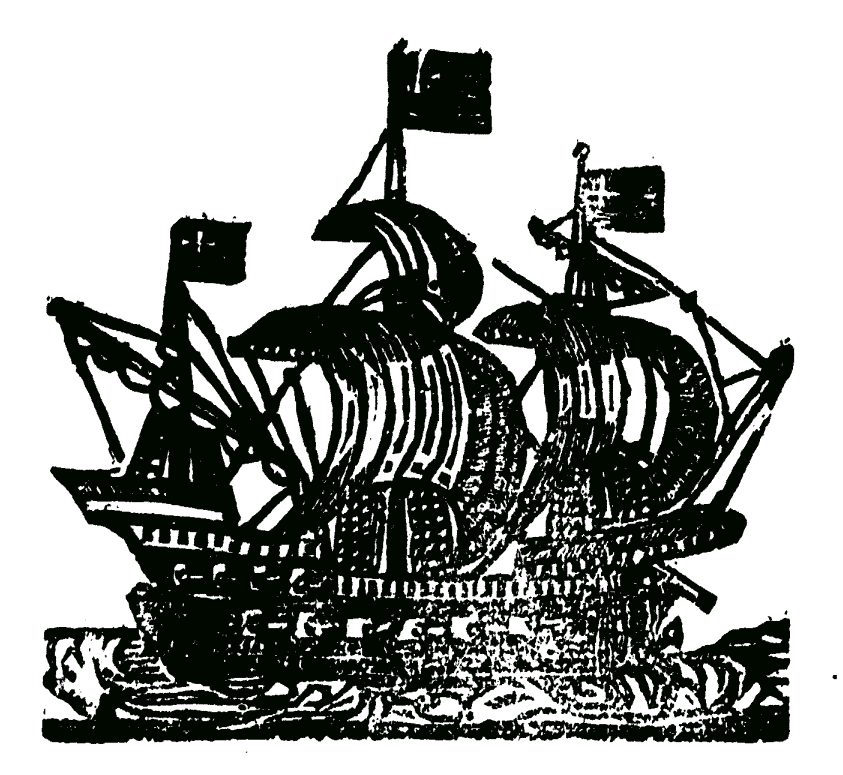


|
The Campden Wonder |

|
|||
| "Time, the great Discoverer of Truth, shall bring to Light this dark and mysterious Business" | |||||
|
|
|
|
|
|
|
Before we can attempt to shed any light on this dark and mysterious business, it will be necessary to have at last a basic understanding of the historical context in which the Campden Wonder events took place.
In 1660, these islands were just emerging from two decades of internecine strife. Although three distinct episodes can be identified, the Civil War had raged almost uninterrupted between 1640 and 1651, as the forces supporting Parliament on the one side and King Charles I on the other disputed the political and religious future of Britain. It was a bloody and destructive conflict in which, it is estimated, over 100,000 lost their lives on the field of battle but perhaps half a million more died as a result of famine and disease occasioned by the war.
On 30th January 1649, King Charles I was beheaded on a scaffold outside the Banqueting House at Whitehall. In February the Monarchy and the House of Lords were abolished, and in May England was declared a “Commonwealth”. But this experiment with republicanism was short-lived and ill-fated. England seemed incapable of ruling itself without a monarch and in December 1653 Oliver Cromwell was declared Lord Protector, King in all but name. The period of Cromwell’s Protectorate (1653-1658) was a period of repressive social, political and religious control dominated by the spirit of radical Protestantism. Sports such as horseracing and cockfighting were outlawed; the theatres closed down; drunkenness and blasphemy punished severely.
By the time of his death in 1658, Oliver Cromwell had become as dictatorial as his predecessor and even more unpopular than King Charles had been. Oliver’s son Richard briefly became Lord Protector after his father, but Richard lacked his father’s strength of character and his regime quickly collapsed. In order to fill the political vacuum that had been created, Parliament proposed to restore the monarchy and offered the throne to Prince Charles, son of the executed Charles I, on condition he agreed to a general amnesty and made a number of concessions to religious toleration.
On 4th April 1660, Charles issued the Declaration of Breda from exile in Holland. Charles declared himself willing to accept a general pardon for all crimes committed during the Civil Wars, Commonwealth and Protectorate. The only exception concerned the regicides, that is, those who had been directly involved in the trial and execution of his father. He also expressed his wish for freedom of conscience in religion.
On 8th May 1660, Parliament declared Charles to have been King since the death of his father in 1649 and on 14th May ordered the arrest of all surviving regicides. On the 25th, Charles returned to England at Dover. On the 29th May 1660, his 30th birthday, the new king, Charles II entered London to a hero’s welcome, greeted by the exhausted English people as a saviour who would restore stability and peace to their war-torn homeland.
From our perspective, some 350 years later, it is easy to imagine that the whole country now heaved a collective sigh of relief and celebrated the start a new era in British history. For those who had opposed Cromwell, this was no doubt a time of rejoicing and great new hope, back then in 1660, there can have been no absolute certainty that this would be anything other than another false dawn and a new chapter in the conflict. For those who had been involved in and identified with the Commonwealth and Protectorate, this must have been a time of fear for their lives and futures and the question uppermost in their minds must have been: would Charles really keep his word and honour the amnesty he had agreed?
William Harrison’s disappearance occurred less than 12 weeks after Charles return to London. During the intervening few months the process of dismantling the old regime had got underway and a new set of officials had taken charge throughout the land. The judges at the trials of the Perrys had been appointed only a few months earlier to replace those who had served under the Cromwell’s. No doubt the Justice of the Peacewho interrogated John Perrywas also a recent appointee: Sir Thomas Overbury , the author of the Account was himself knighted only on 25th June 1660 and was probably made a justice around the same time.
Meanwhile, the regicides, whose crimes against the King were explicitly excluded from the amnesty, were being tracked down and arrested. Not long after the Perrys’ first trial, in October 1660, a special court was convened in London to try those regicides who had been captured by that time. Sir Christopher Turner, the judge at the Perrys’ first trial, was also one of the judges at the Trial of the Regicides and Robert Hyde, the judge at their second trial, acted as an advisor. Ten of the accused were condemned to death and publicly hanged, drawn and quartered: Thomas Harrison, John Jones, Adrian Scroope, John Carew, Thomas Scot, and Gregory Clement, as signatories of the King's death warrant; the preacher Hugh Peters; Francis Hacker and Daniel Axtel, who commanded the guards at the King's trial and execution; and John Cook, the solicitor who directed the prosecution.
It might be tempting to think that a town like Chipping Campden, lying many miles from any major city, would have been left relatively unscathed by this national conflict and upheaval. But this would be to misunderstand the extent to which the effects of Civil War permeated every region and touched the lives of virtually every man, woman and child in the land.
In the Middle Ages, like many Cotswold towns, Chipping Campden derived its prosperity mainly from the wool trade. In the 14th century, William Grevel, one of the foremost wool merchants in the land, lived in the town, and around 1380 he built a fine house there which still stands today. The Latin inscription on his memorial in the parish church of St. James, when translated, reads "Here lies William Grevel of Campden, formerly a citizen of London and flower of the wool merchants of all England, who died on the first day of October A.D. 1401"
However, over the years as successive kings sought funds to fight their various wars, restrictions on the wool trade were imposed and a system grew up under which wool could only be exported through a limited number of places known as the staple towns. When Chipping Campden petitioned the King in 1617 to become a staple town, its application was refused. This effectively sounded the death knell for the wool trade in the borough and the prosperity which the trade had brought died with it.
Campden was fortunate enough to have a wealthy benefactor to help it through these difficult times. In 1610, the manor had been acquired by Sir Baptist Hicks, a successful London cloth merchant whose family had historical links with Bristol and Gloucestershire. Hicks was a generous man - he could afford to be, as he was reputedly one of the richest men in England. Even today, 400 years later, there are many reminders of Sir Baptist Hicks to be found in Chipping Campden. In 1612, he built a fine row of almshouses near the church at the cost of £1,000. Some fifteen years later he erected the market hall in the High Street. He endowed the local Grammar School and repaired, refurnished and embellished the parish church, where the pulpit he donated is still inscribed “Ex done benigni Baptistae Hicks”. Later Hicks and his family would be interred there in a chapel dedicated for their use alone and still dominated by their impressive memorials.
In 1628 Sir Baptist Hicks was accorded the titles Viscount Campden of Campden Gloucestershire and Baron Hicks of Ilmington, Warwickshire. However, since he had no surviving male heir, when he died the following year, these titles and his estates in and around Campden passed to his son-in-law. Edward Noel. Lord Noel of Ridlington, Rutlandshire, was the husband of Sir Baptist’s eldest daughter Juliana. It is this Juliana Noel who is referred to in Overbury’s Account as Harrison’s mistress, Lady Campden.
Around 1613, Hicks started work on Campden House, a magnificent Italianate mansion built on a piece of land adjoining the church. Surrounded by 11 acres of magnificent gardens, flanked by two separate banqueting houses and topped with twisted spiral chimneys and a domed cupola containing a lantern lit as a beacon for travellers, Campden House cost a total of £29,000, a vast amount at the time, and was reputed one of the wonders of it age.
There exists a pen, ink and watercolour illustration of Campden House as it is supposed to have looked before its destruction, ascribed to William Hughes and dated to the middle of the 18th century (British Library, Kings Maps Top XIII 75.3). This picture or an engraving of it is reproduced in several books, notably Percy C. Rushen's "History and Antiquities of Chipping Campden"
Quite what validity this picture has, dating from a hundred years or so after the time of the house itself, is unclear, but if it is in any way accurate, then Campden House must indeed have been a splendid building in an imposing setting.
Tragically, only thirty years later, it was a smoking ruin. In 1643 the house was occupied by Royalist troops. Under the command of Sir Henry Bard, the garrison terrorised the neighbourhood and plundered whatever they could find in the town. There are several references in the historical record to the hardships endured by the townsfolk during this period. For example, in 1644, the account book of the Chipping Campden Grammar School reports that the governors of the school charity gave 5 shillings to “good man Hurlston’s wife pillaged by the soldiers of all her goods”. Of the occupation of Campden House , Rushen says “Sir Henry Bard kept possession of it for several months, during which period, the townspeople and husbandmen in the vicinity must have grown to hate him, and possibly his cause also, by reason of the unwarrantable and unnecessary devastation wrought by his orders throughout the district.”
Great damage is said to have been done to Sir Baptist’s Hicks fine house even before 1645, when the troops were withdrawn and the house set ablaze, for reasons and in circumstances which have never been fully explained.
Fifteen years later, when William Harrison set off to collect overdue rents from Lady Campden’s tenants, Hicks’ once magnificent mansion can have been no more than a heap of robbed out stones in a rapidly decaying untended garden. Only the gatehouse and the two banqueting houses survived intact, as they do to this day, hinting at the splendour of the great house to which they were once no more than outbuildings.
William Harrison was employed by Lady Juliana Noel, Viscountess Campden, eldest daughter of Sir Baptist Hicks and widow of Sir Edward Noel, who had died at the King’s quarters in Oxford in 1643. The Noels were prominent supporters of the Royalist cause. Edward’s son Baptist Noel, who inherited the title of Viscount Campden on his father’s death, also fought on the King’s side and is said to have led an unruly troop of soldiers known as the Campdeners.
At the restoration of Charles II, the Noels were quickly rewarded for their loyalty. Baptist was appointed Lord Lieutenant of Rutland on 9th August 1660, only a week before Harrison’s disappearance.